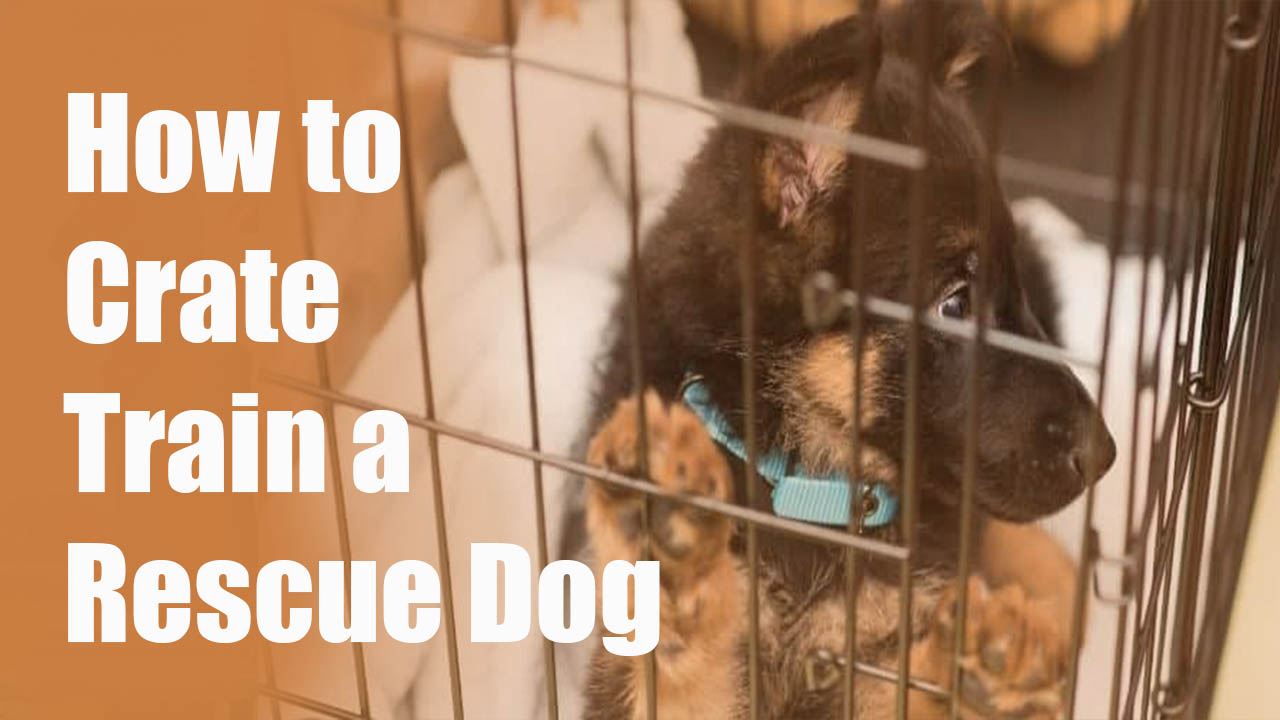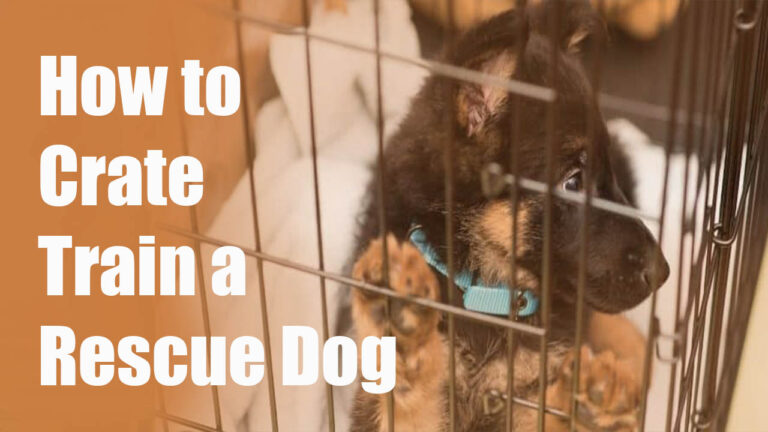Crate training a rescue dog can be a bit of a challenge, but it’s doable with some patience and perseverance. Rescue dogs may have had some bad experiences in the past that make them wary of being confined in a small space, so it’s important to go slowly and let them get used to the crate at their own pace. With some time and effort, you’ll be able to crate-train your rescue dog successfully!

What is Crate Training?
Crate training is the process of teaching a dog that its crate is a safe and comfortable place. The goal is to create a positive association with the crate, so your pup will view it as an area where they can relax and take refuge.
Why is Crate Training Important?
Crate training is an important part of responsible dog ownership. It can help keep your pup safe and secure when you’re not able to supervise them, as well as provide a place where they can get away from the hustle and bustle of family life. Additionally, crate training gives you peace of mind that your pup won’t be destroying your home while you’re away!
Five Reasons to Crate Train a Dog
1. Helps keep your pup safe when you can’t supervise them.
2. Creates a space where they can go to relax and find refuge.
3. Prevents destructive behaviors like chewing and digging while you’re away.
4. Can be used as a teaching tool for potty training.
5. Establishes boundaries and gives your pup a sense of security and routine.
Five Steps to crate training your rescue dog
1. Introduce the crate gradually and positively by providing treats and toys inside and making sure your pup associates the crate with good things.
2. Use commands like “go to bed” or “kennel” when asking your pup to enter the crate.
3. Praise him and give him treats when he goes into the crate on command.
4. Increase the amount of time you leave your pup in his crate until he’s comfortable being left alone for extended periods.
5. Work up to leaving the door open and allowing your pup to enter and exit at will.
Crating your rescue dog based on his age and temperament
When it comes to crate training a rescue dog, there are some important things to consider. The age and temperament of the dog should be taken into account when determining how quickly you can introduce the crate and start using it for training. Puppies may adjust more quickly than older dogs who have had bad experiences in the past with confinement. Working on crate training slowly and patiently will help your pup get used to the crate without feeling overwhelmed.
How to Start Crate Training an Older Dog
Older rescue dogs may have had some negative experiences in the past that make crate training more of a challenge. It’s important to be patient and go slowly, giving your pup time to get used to the crate at his own pace. Here are some tips for starting crate training with an older dog:
1. Start by placing the crate in a quiet area of your home, away from high-traffic areas.
2. Place treats and toys in the crate to make it an inviting place for your pup.
3. Introduce commands like “go to bed” or “kennel” when asking him to enter the crate.
4. Start by leaving your pup in the crate for just a few minutes at a time and slowly increase the amount of time you leave him in there.
5. Offer rewards and praise when your pup enters the crate on command or remains inside without fussing.
FAQ About Crate Train a Rescue Dog
How do I get my rescue dog to stop in his crate?
If your pup is whining in his crate, it’s likely a sign of anxiety. The best way to address this behavior is to take things slow and introduce the crate gradually. Start by placing the crate in a quiet area of your home where he won’t be disturbed, and make sure you are providing treats and toys inside.
How long does it take for a dog to get used to a crate?
The amount of time needed for a rescue dog to adjust to his crate will vary depending on his age and temperament. Puppies may take less time than older dogs, as they have not had negative experiences in the past. Going slow and introducing the crate gradually will help your pup adapt more quickly.
How do you get a scared dog into a crate?
If your pup is scared to go into the crate, start by introducing it gradually in a positive way. Place treats and toys inside the crate, and use commands like “go to bed” or “kennel” when asking him to enter. If he still seems scared, try placing a blanket over the top of the crate to make it a more inviting space. Offer rewards and praise when he goes into the crate on command or remains inside without fussing.
Is creating a dog cruel?
No, crating is not cruel if done correctly. When used as a teaching tool, crates can provide your pup with structure and routine, help him learn basic commands, and provide a safe area for him to stay when he needs a break from all the activity in the home. However, if you are leaving your pup crated for long periods or using the crate as a punishment, then it can become an unpleasant experience for your pup.
At what age is it too late to crate-train a dog?
It’s never too late to crate-train a dog! Older rescue dogs may take longer to adjust to the crate, but with patience and positive reinforcement, they can still learn. Start by introducing the crate gradually in a quiet area of your home and giving plenty of rewards when your pup goes inside on command or remains there without fussing.
How to Crate Train a Rescue Dog?
Get the right-sized crate for your pup and place it in an area of your home where they can feel safe and comfortable. Feed your pup their meals inside the crate.
Final Words
Crate training a rescue dog can take some time and patience, but it is possible with the right approach. Start by introducing your pup to the crate gradually and using positive reinforcement when he is in there. Hope this article will help you.



